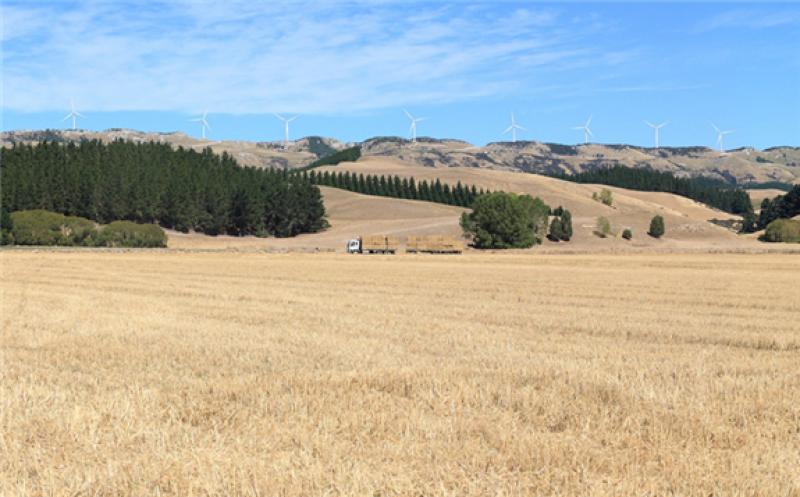Construction of the 22 turbine Mt Cass Wind Farm, consented eight years ago, is planned to start late this year.

MainPower expects the wind farm, which will be the largest in the South Island, to be finished in 18 months.
The North Canterbury lines company earlier put the cost of the project at around $200 million.
The turbines will stretch along a 7.5 kilometre ridge on Mt Cass, about 5km east of the Waipara township. The regional Kate Valley landfill is nearby.
It will generate 93 megawatts of power when operating at full capacity, enough to power 40,000 homes.
MainPower chief executive Andy Lester says the project is exciting for the company and the wider community.
“As well as long-term economic benefits for our shareholders, consumers and community, the project includes $6 million of environmental initiatives, including a 127 hectare conservation management area and a 7km extension to the existing Mt Cass Walkway,” he says.
MainPower has been monitoring wind data for nearly two decades at the site, and Mr Lester says it is delighted to have made great progress on the project during 2020.
The project team is now working to get financial close on the project by mid-year, when key contracts are ready to sign and final costs approved.
Despite delays due to the Covid-19 lockdown, the bulk of the pre-construction activities have been completed.
Detailed geotechnical investigations along with ecological surveys have been done. The last elements of the developed design are being finished, which includes the design of the roading, turbine platform civil works, turbine foundations, landscaping and electrical work.
MainPower has been working with the Department of Conservation, the Hurunui District Council and other stakeholders to make sure wildlife and plants in the area are protected.
The environmental initiatives at the site, which also include shifting lizards from the wind farm footprint, extensive monitoring and reporting on the area’s ecology, will extend over the life of the wind farm and beyond.
A community liaison group has been formed, made up of local volunteers. The group facilitates the flow of information between the project team and the community. A monthly email newsletter is also produced. Interested parties can sign up to it at mtcasswindfarm.co.nz.
Wider community engagement, including local meeting and updates, are planned closer to when constructions starts.
The land use consent expires in February 2025, following a five year extension granted by the Hurunui District Council in 2019. But with the company pushing on with its plans, the project is expected to be completed well before then.
Detailed geotechnical investigations and ecological surveys have been done. The last elements of the design are being finished, which includes the roading, turbine platform civil works, turbine foundations, landscaping and electrical work.
MainPower has been working with the Department of Conservation, the Hurunui District Council and other stakeholders to ensure local wildlife and plants are protected.
Environmental initiatives, which include shifting lizards from the wind-farm footprint and monitoring and reporting on the area’s ecology, will extend over the life of the wind farm and beyond.
A community liaison group has been formed, made up of local volunteers. The group facilitates the flow of information between the project team and the community. A monthly email newsletter is also produced.
People can sign up to it at mtcasswindfarm.co.nz. Wider community engagement, including local meetings and updates, are planned closer to when construction starts.
The land-use consent expires in February 2025, following a five year extension granted by the Hurunui District Council in 2019. With MainPower pushing on with its plans, the project is expected to be completed well before then.